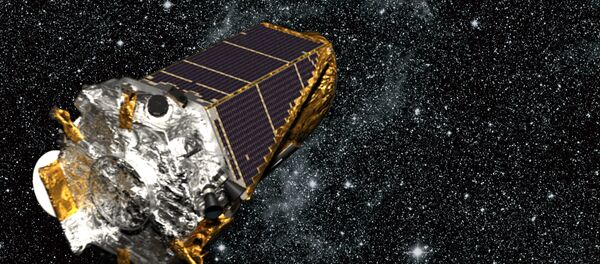The latest theory on ‘Oumuamua comes from a study published on Thursday by Shmuel Bialy and Abraham Loeb, a pair of astronomers with the Harvard Smithsonian Center for Astrophysics.
When scientists reviewed data collected by the Pan-STARRS-1 survey of ‘Oumuamua's closest flyby of the sun on September 9, 2017, they noted that the mysterious rock gained speed, rather than slowing down. Researchers at the time explained that the increase in ‘Oumuamua's velocity was likely explained by outgassing, the release of gas trapped or frozen inside the rock. The object itself was later classified as a comet by officials.
However, this explanation didn't sit right with Bialy and Loeb, who argue that had outgassing been the cause of ‘Oumuamua's increased velocity, it would've sent the interstellar object into a spin, which wasn't observed.
The pair suggested that ‘Oumuamua could actually be a light sail, a spacecraft that relies on radiation pressure for power, that's been sent from an alien civilization looking for signs of life in our solar system.
"We explain the excess acceleration of ‘Oumuamua away from the sun as the result of the force that the sunlight exerts on its surface. For this force to explain measured excess acceleration, the object needs to be extremely thin, of order a fraction of a millimeter in thickness but tens of meters in size," Loeb told Universe Today via email.
"This makes the object lightweight for its surface area and allows it to act as a light sail. Its origin could be either natural (in the interstellar medium or proto-planetary disks) or artificial (as a probe sent for a reconnaissance mission into the inner region of the solar system)."
Bialy and Loeb later explained in their work that should their theory prove true, there is the slight possibility that the light sail could even just be a "defunct sail floating under the influence of gravity and stellar radiation."
But then again, alien civilizations.
"The alternative is to imagine that ‘Oumuamua was on a reconnaissance mission. The reason I contemplate the reconnaissance possibility is that the assumption that ‘Oumumua followed a random orbit requires the production of ~10^{15} such objects per star in our galaxy. This abundance is up to a hundred million times more than expected from the solar system, based on a calculation that we did back in 2009," Loeb wrote.
"A surprisingly high overabundance, unless ‘Oumuamua is a targeted probe on a reconnaissance mission and not a member of a random population of objects."
Questions remain regarding the origin of ‘Oumuamua, and considering the rock is no longer in our solar system and is much too far away for researchers to observe, the lab coats might be in the dark for some time on the matter.



